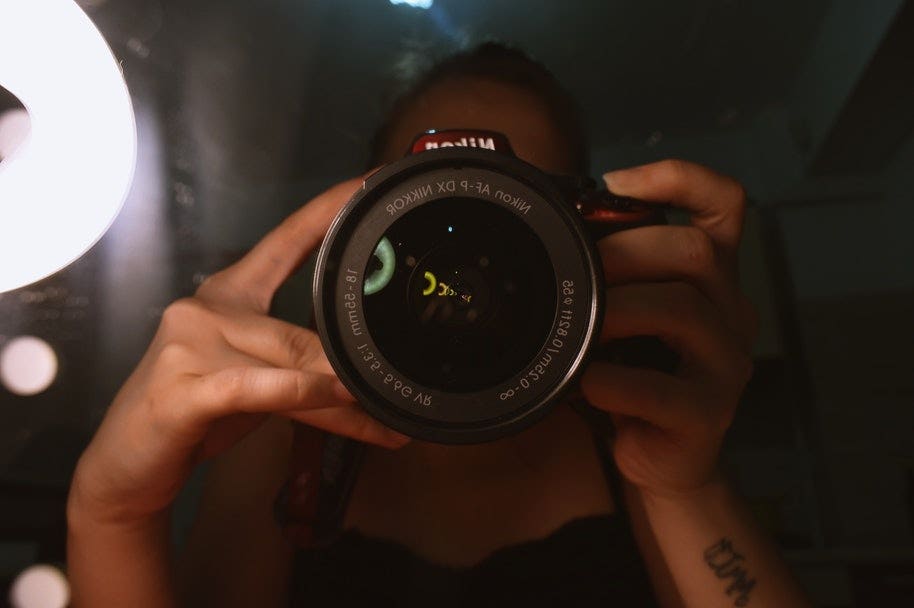
Camera focusing has changed drastically since the first cameras were released more than 100 years ago.
Today, photographers are gifted with autofocusing, thanks to the development of autofocus points.
Autofocusing allows photographers to focus on composition and lighting without having to worry about focus. But it’s also a great opportunity for more serious photographers to experiment with different focusing methods and to drastically change the look of each shot.

What are my camera’s autofocus points?
Your camera’s autofocus points are a visual representation of what your camera is focusing on. They usually appear on your camera’s viewfinder or LCD screen as empty squares or dots.
When you buy a camera, you’ll commonly read specs referring to 9-point or even 51-point AF systems. This describes how many AF points a camera has - the more points, the more finely you can tune your focusing.
Your autofocus points - whether viewed through the viewfinder or on the screen - are generally most noticeable when you press the shutter halfway. At this point, your camera might emit a beep, and some of the AF points usually blink a different light. These are the areas where your camera is automatically focusing on.
How do autofocus points work?
Most DSLRs today use phase detection autofocus systems. In this setup, light passes through your camera’s lens and mirror to hit special autofocus sensors for focusing.
Cameras that don’t use a mirror (such as mirrorless cameras, compact cameras, and smartphone cameras) typically use contrast detection autofocus systems. In this scenario, your camera uses the main sensor rather than a dedicated sensor for focusing.
Phase detection AF often only allows a limited number of AF points, since it relies on the design of the mirror and number of autofocus sensors. On the other hand, contrast detection enables an almost unlimited number of points, making it frequently the more accurate alternative.
Different types of AF modes

You can set your camera to various autofocus modes to cater to different shooting scenarios. The three most common modes are single, continuous, and hybrid.
Single AF mode
This mode is commonly called Single Area AF (or AF-S) on Nikon cameras and One Shot AF on Canon Cameras.
In this mode, you use just the one single focus point to create a sharp photo as long as you and your subject remain still. In essence, the autofocus in “locked” and won’t be able to adapt if you or your subject suddenly move.
Continuous AF mode
With continuous AF, your camera tracks your subject and predicts which direction it’s moving in to keep it in focus. It continuously readjusts focus.
Nikon calls this mode Continuous/AF-C, while Canon calls it Al Servo mode. This is the mode you want for any sports or wildlife photography.
Hybrid AF modes
When you just don’t know whether you’ll be shooting moving subjects or stills, your camera might have a hybrid autofocus mode that will come in handy.
In this mode (called AF-A on Nikon cameras and AI Focus AF on Canon cameras), your camera will automatically switch between whichever mode is needed most. If the camera detects movement, it will automatically use Continuous focus.
It’s a mode typically designed for beginners and generally isn’t found on professional DSLRs and mirrorless cameras.
How to manually select AF points
As a default, traditional cameras typically focus and meter to the centre of the frame. With autofocus points, your camera decides for itself what your main subject is - it could be the largest or the fastest object in the frame.
If you prefer a little more control over your focusing, you can manually select which AF points you want to activate and thus which areas of your scene you want to focus on.
Touchscreen displays have made this especially easy - nowadays, you need only touch the part of the scene that you want to be in focus on your LCD screen.
If your camera doesn’t have a touchscreen, you can usually toggle between AF points using the wheels or arrow keys on the back of your camera.
Why can’t my camera focus?
Sometimes, no matter which method of autofocusing you choose, your camera will fail to detect the object behind the AF point. If your camera can’t focus, you won’t be able to take a picture.
This normally happens because you’re either too close to your subject and outside your lens’s minimum focal range, or the setting is just too dark for your camera to detect any object.
To help your camera focus, you can:
- Try choosing another AF point
- Step back until you’re behind your lens’s minimal focusing distance
- Switch to manual focus
Are you ready to improve your focus?
Mastering the art of focusing is one of the areas of photography that will help you drastically improve your craft. Still having trouble with your autofocus? Read up on these common autofocus problems or find out why your photos might be blurry (it might not have anything to do with your focus!
